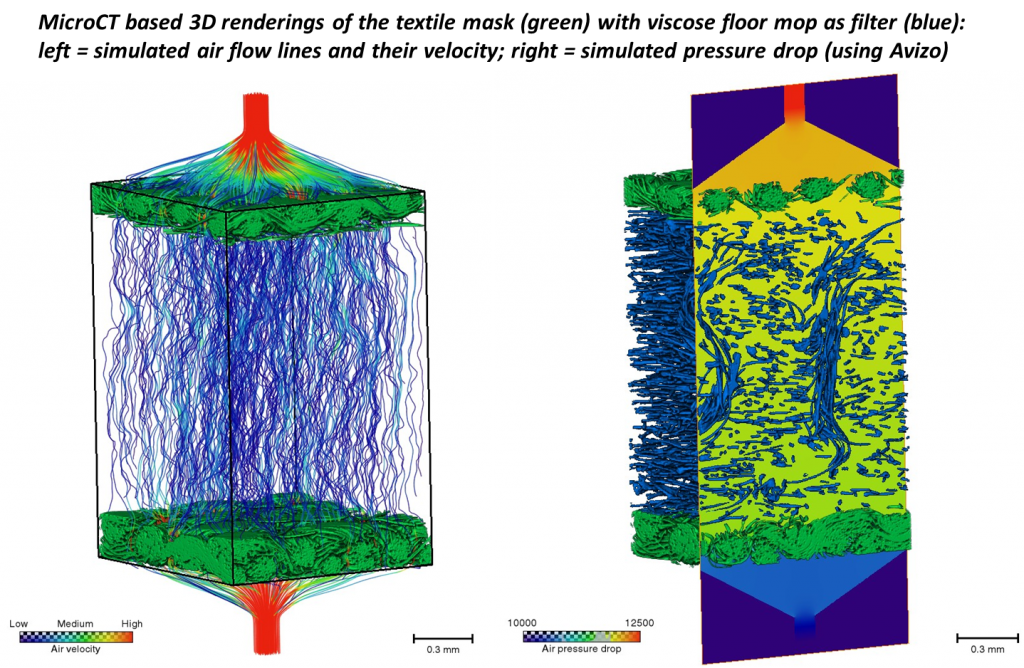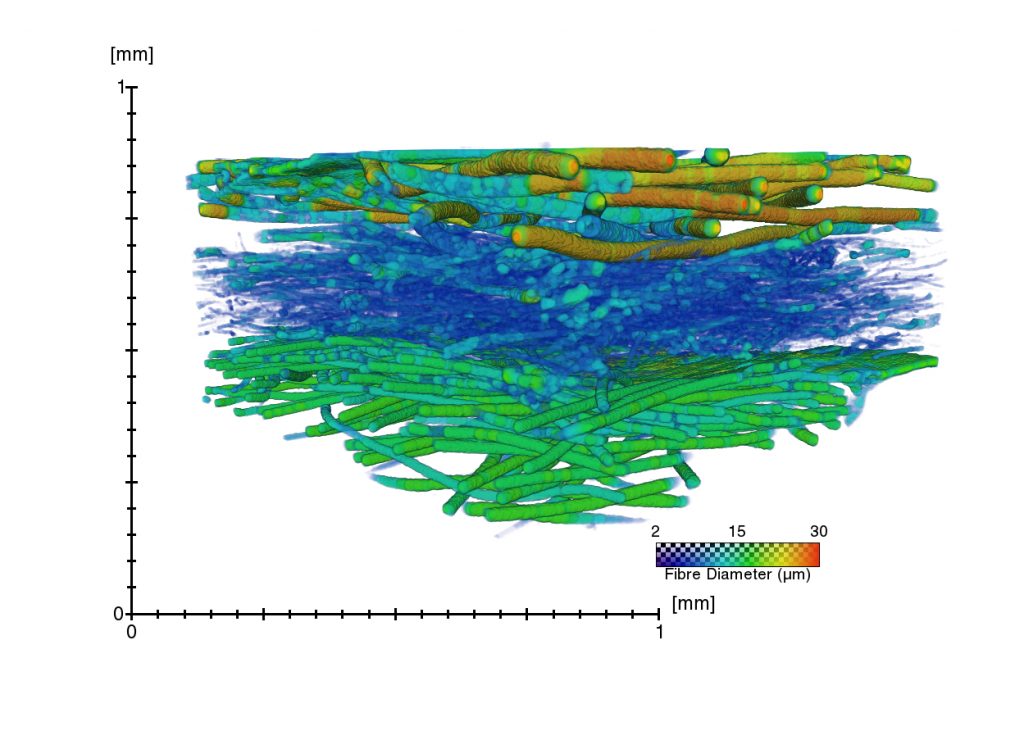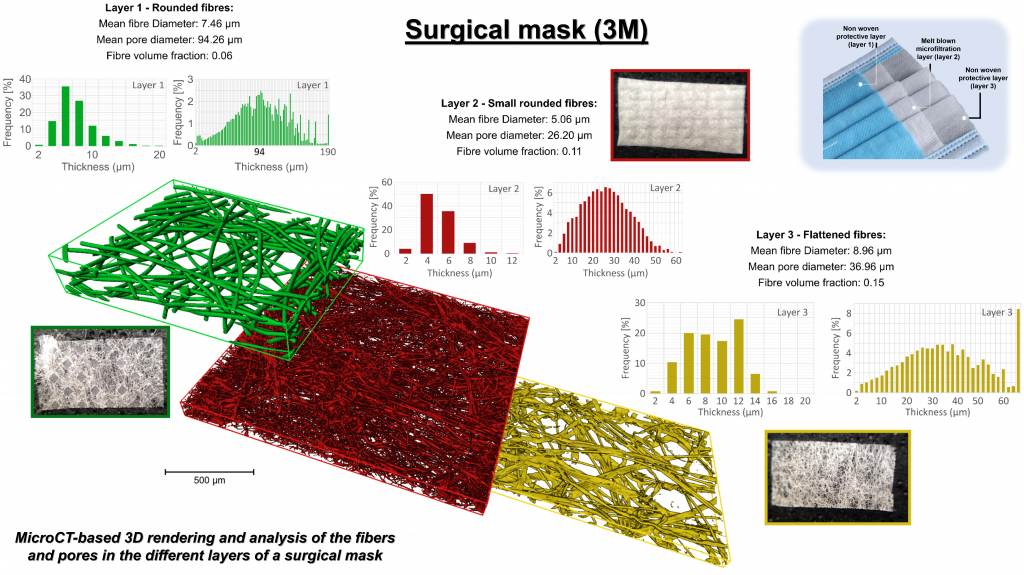Updated 24-06-2020
We characterize the morphological parameters of different filter materials and textile masks from our high-resolution microCT datasets. Using these datasets, we additionally simulate the pressure drop through the material (using AVIZO – ThermoFisher). The results are available here, and will be further updated on a very regular basis.
We have now correlated our microCT-based calculations with physically measured filter efficiency and pressure drop (performed by VITO, Mol, Belgium, in agreement with the NBN guidelines). These measurements can also be found here.
We see a strong correlation between our simulated pressure drop values and the physically measured pressure drop:
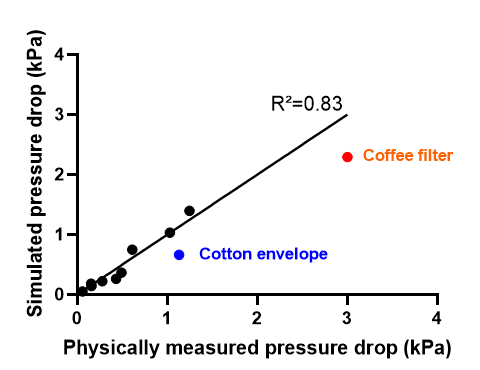
Additionally, we are using statistical modelling (Partial Least Squared Regression – in close collaboration with Prof. Lies Geris (ULiège and KU Leuven)) to try to predict, based on our micro-CT based measurements, the filter efficiency. Preliminary analysis shows that we can predict the filter efficiency for particles down to 3µm with up to 82.4%. Although improvements are still being made, we are getting close to a virtual testing platform for materials for potential face masks!
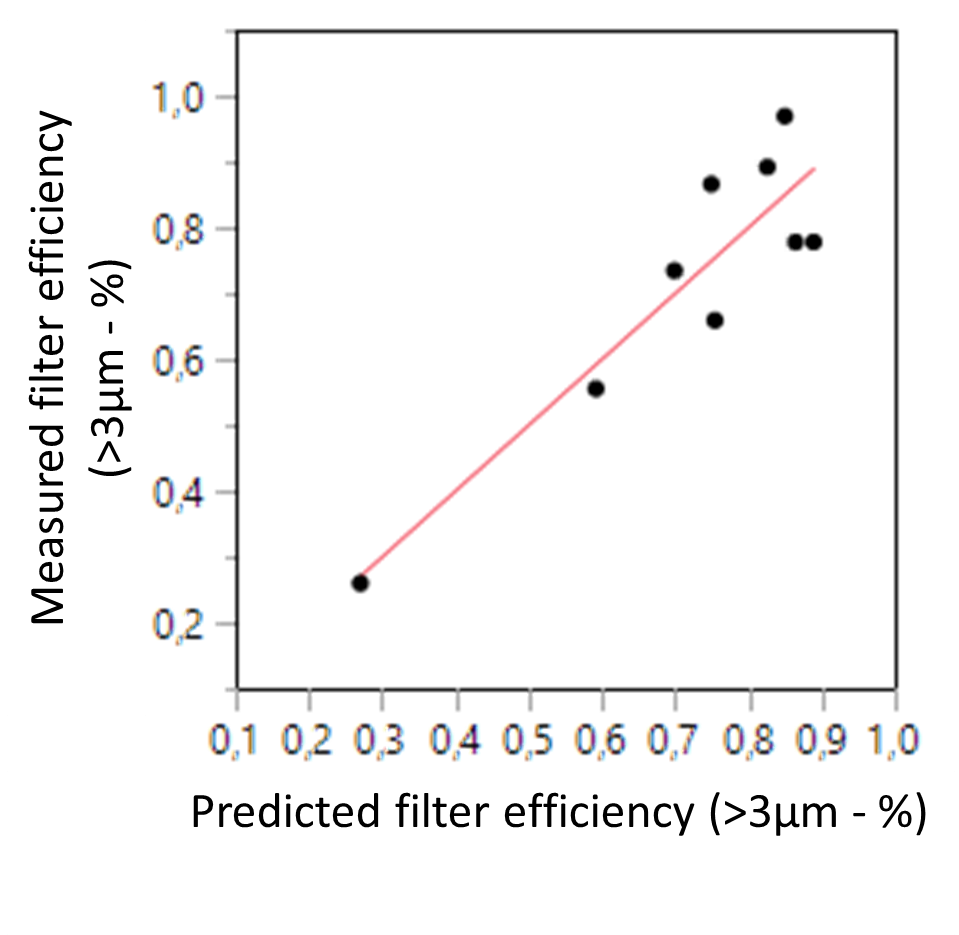
You find below also 3D renderings of some of our datasets, including or not the flow paths from the pressure drop simulations.
